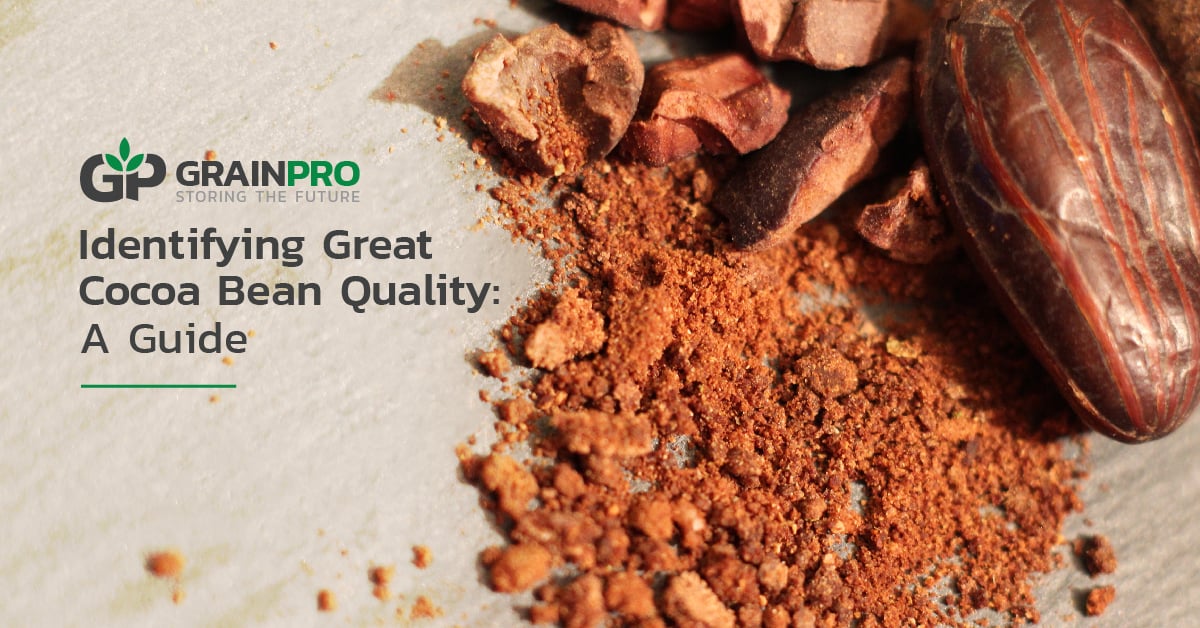Identifying Great Quality in Cocoa Beans: A Guide

Despite the pandemic causing economic hardships for many businesses, the chocolate industry seems to be thriving. In the US, people have turned to the sweet treat to while their hours away at home. This is good news for cocoa producers, traders, and manufacturers, but do consumers know how to tell whether their chocolates come from good quality cocoa beans?
Recognizing great quality in cocoa beans is an essential skill for chocolate makers and cocoa traders. With this guide, consumers can also learn the basics through these indicators:
Flavor. According to a guideline from the European Cocoa Association (ECA), the correct parameter for flavor “includes both the intensity of the cocoa or chocolate flavors, together with any ancillary flavor notes.” The primary flavors also include a mix of pleasant bitterness and the right amount of acidity, while the ancillary flavors are a variety of fruity, spicy, nutty, or floral, with notes of caramel, honey, or even hazelnut.
Producers and traders would not want cocoa beans to have off-flavors, as this affects the end-products. A moldy taste and excessively bitter or acidic flavors, resulting from under-drying or over-fermentation, can compromise the value of finished goods.
A cut test is used to evaluate the quality of fermented cocoa beans. Some processors utilize the cut test as an indicator of flavor. This evaluation is usually used to assess if a batch of beans was properly fermented.
Additionally, smoky off-flavors can also negatively affect quality. This happens particularly when firewood is used to hasten the drying of the cocoa beans.
Physical appearance. Fine cocoa bean quality can also be determined through the physical characteristics of the beans. One physical indicator is consistent bean size, which is an important aspect because smaller cocoa beans would warrant recalibration of machinery, affecting manufacturing processes.
Varying sizes can also slow down cleaning and sorting, costing additional time and labor.
Moisture content is another physical attribute to keep an eye on. Having the ideal moisture content of 7% ensures that mold and bacterial growth is avoided. This allows producers and traders to safely transport, store, or process the cocoa beans.
Drying cocoa beans must be carefully done to prevent casehardening, which results from exposure of the beans to higher than recommended temperatures. When exposed to temperatures greater than 60 degrees C, the surface of the cocoa beans becomes a shell that traps inner moisture.
Case hardening often results in uneven drying that allows molds to grow when these beans are stored. When drying cocoa beans, it is a must to prevent rapid drying at the start of the process. Slow drying will allow moisture to move into the bean surface by diffusion, ensuring uniform moisture within the cocoa beans. With this, the beans can be safely stored without compromising overall quality.
Read: How to Dry Cocoa Beans The Right Way
Broken cocoa beans are also a sign of low quality. This indicates that the moisture content is too low, perhaps due to overdrying and exposure to high temperatures, which renders the beans too fragile to process.
Traceability. In the food industry, traceability allows concerned parties to “follow the movement of a food through specified stages of production, processing, and distribution,” according to the Food and Agriculture Organization.
This step also provides reliable food information. This is especially helpful for traders to ensure that they don’t procure cocoa beans from farms that employ child or even slave labor. This keeps the cocoa beans and the brand of end products wholesome from origin through processing.
FFA content. High levels of free fatty acid (FFA) in cocoa beans result in poor quality cocoa butter, which is the main component that creates the delicious, melt-in-your-mouth feel of good chocolate.
FFA is produced from the hydrolysis of oils and fats, and in cocoa beans, it is influenced by humidity, molds, temperature, and the presence of oxygen. Increasing FFA in the beans is enhanced by high temperature and moisture content.
This is why producers need to keep an eye on their cocoa beans during fermentation so microflora and molds won’t grow. Failure to control this leads to higher FFA levels, resulting in excessively bitter and rancid chocolate.
Identifying what it takes to achieve great quality cocoa beans is the first step to achieving it. The next important part is applying this knowledge to improve harvesting and post-harvest processing.
GrainPro's holistic post-hrvest solutions help producers and traders to properly dry, store and transport their cocoa beans so that each batch retains peak quality.
The GrainPro Bag is a trusted storage and transport tool in the cocoa industry, protecting small batches of cocoa beans from external moisture while retaining quality. For larger quantities, the GrainPro Cocoon line serves as bulk storage to keep insects, mold, and moisture out while also keeping aroma, flavor, and overall quality intact. When transporting large quantities, importers use the GrainPro TranSafeliner to reduce moisture damage during transoceanic routes.
Read: The Best Way to Transport Cocoa Beans
For evenly dried cocoa beans, GrainPro has the Solar Bubble Dryer that protects commodities from erratic weather, contamination, and quality loss.
These tools are part of GrainPro's campaign to provide better post-harvest systems for agricultural businesses, from smallholder farmers to large traders and manufacturers.
To learn more about GrainPro's solutions, click the link below.
